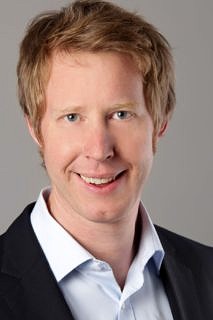Dialects challenge theories of language change

FAU research Prof. Dr. Sebastian Kürschner on the significance of dialects
Baggers, Gwerch, Broudwoschd – these words from Franconian regional dialects are so different from High German that they are just as meaningless to other Germans as they are to non-German speakers. Various dialects of German are the subject of the Bayerisch-österreichische Dialektologentagung (Conference on Bavarian-Austrian Dialectology) which will be held at the end of September. At the conference linguists will discuss Bavarian and Austrian dialects, as well as German dialects in neighbouring regions. Sebastian Kürschner, professor of variational linguistics and contact linguistics at FAU, explains in this interview why this research is important and what the future holds for dialects.
Dialects were seen as less valuable than High German for a long time and sometimes still are. Why is dialect research important?
Many people use language that is characterised by dialect on a daily basis. For us linguists, studying this everyday language is just as important as studying standard language. One of the topics that we study is why the status of dialects is often lower than that of standard language. But the traditional linguistic features of dialects, such as grammar and lexicon, i.e. vocabulary, are also interesting objects of study as dialects develop more quickly and freely than standard language, giving us insight into natural language development that takes place independently of written language.
Can you give us some examples?
There is a particular theory in German that is proposed again and again which states that the difference between the singular and plural form of a noun must be marked. This can be done through endings, such as with ‘Ente’ (duck), the plural of which is ‘Enten’, but can also be shown by changing the article, such as how the singular ‘das Messer’ (the knife) becomes ‘die Messer’ in the plural. In German, the feminine singular article is the same as the plural article – the singular ‘die Katze’ (the cat) becomes ‘die Katzen’ in the plural – which means that in these cases the difference can only be marked on the noun, and this is the case in High German. However, the single and plural forms of feminine nouns in many Bavarian and East-Franconian dialects have been the same for hundreds of years – such as ‘die Flaschen’ (the bottle/the bottles). Dialects therefore challenge theories of language change.
What topics will be discussed at the conference?
Alongside questions relating to the language system, questions on the status of dialects and language varieties – i.e. forms of language that are similar to standard language or typical of certain regions or individual towns – will also be discussed. The main focus will be on methodology – how dialectal language can be recorded, processed and evaluated. Topics will include the dialects of Bavaria and Austria, as well as the way they are spoken by the descendants of people from these regions who emigrated to Brazil, for example.
You are not from Franconia yourself – how did you end up studying Franconian dialect?
A large project was conducted in Erlangen which resulted in an eight-volume language atlas of Middle Franconia, and work on the Franconian dictionary is also carried out at FAU. The large amount of data from the two projects can be used to study new questions, so research topics on East-Franconian dialect became the natural focus of my professorship here.
Is there a worry that dialects could die out in German-speaking regions?
Many people fear that this could be the case. However, over the past few decades dialectology research has shown that while features that are typical of specific towns have been disappearing increasingly, they are not necessarily being replaced by the features of a national standard language but are instead being replaced by regional features, which means that dialectal variation continues to exists in the form of regional languages. On the other hand, the number of speakers of a dialect or regional language can sink rapidly, as has happened in many parts of northern Germany – without speakers dialects really do become lost. Nevertheless, there will probably always be language with regional characteristics even if dialects disappear in individual places.
Further information:
Prof. Dr. Sebastian Kürschner
Phone: +49 9131 8523093
sebastian.kuerschner@fau.de